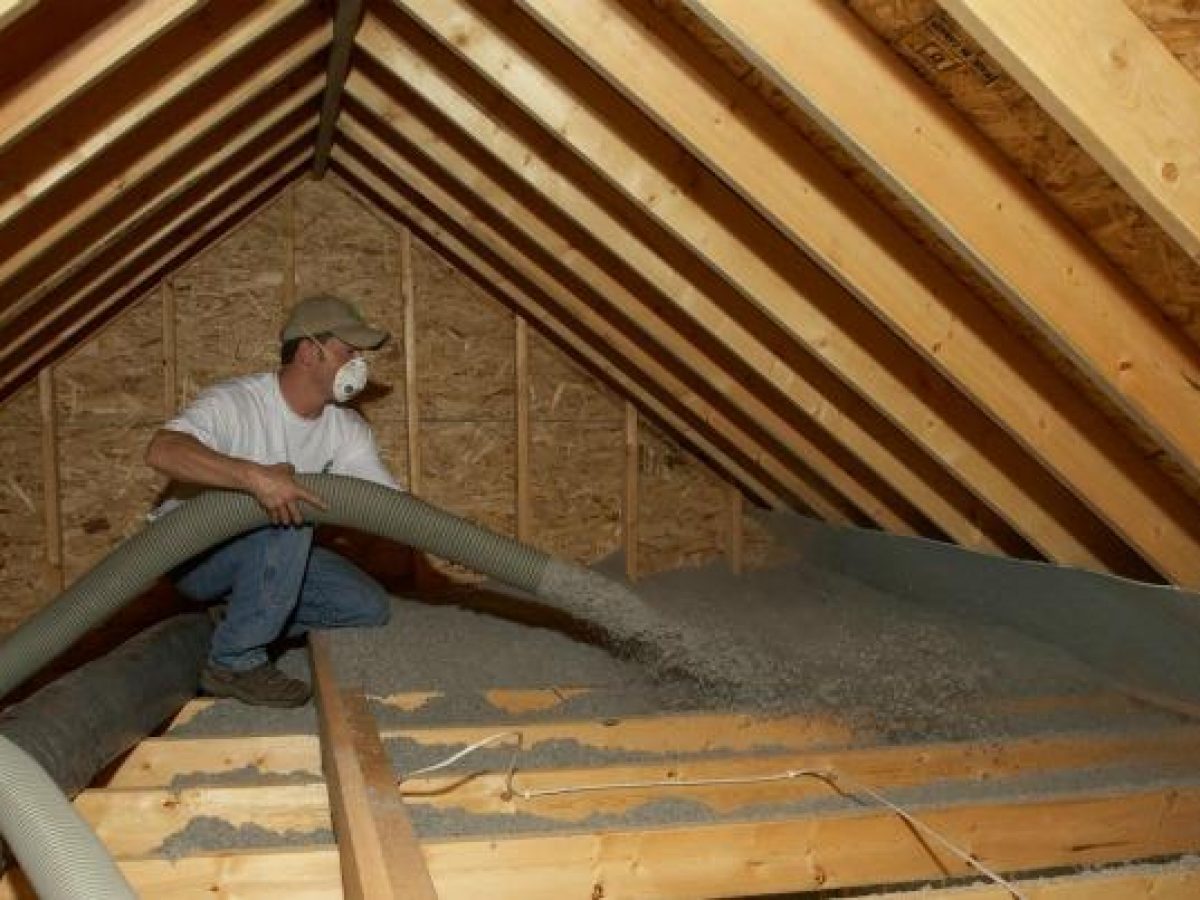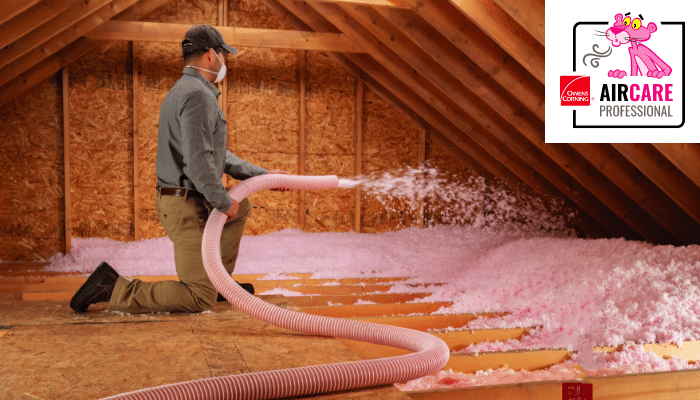Discover the Various Kinds Of Attic Insulation and Their Distinct Advantages for Your Home's Energy Performance

Fiberglass Insulation
Fiberglass insulation is one of the most commonly utilized materials for attic insulation as a result of its excellent thermal performance and cost-effectiveness. Composed of little glass fibers, this product successfully catches air, developing an insulating obstacle that helps preserve regular interior temperature levels. Its high R-value per inch makes it specifically effective at resisting heat transfer, which is vital for energy preservation in homes.
Installment of fiberglass insulation is fairly uncomplicated, often available in batts or loose-fill forms, suiting different attic setups. Furthermore, it is non-combustible and resistant to dampness, lowering the risk of mold growth. This toughness adds to its longevity, making fiberglass a feasible long-lasting financial investment for homeowners.
Additionally, fiberglass insulation is often produced from recycled products, which enhances its eco-friendliness. The product can likewise contribute to soundproofing, minimizing noise transfer in between rooms. While it is necessary to wear protective equipment throughout installment to prevent irritability from the fibers, the overall advantages of fiberglass insulation, consisting of energy savings and environmental considerations, make it a popular option for improving attic efficiency and advertising a comfortable living environment.
Spray Foam Insulation
Spray foam insulation is a highly efficient choice for attic insulation, recognized for its premium air securing and thermal performance. This innovative insulation product is made up of a mixture of isocyanate and polyol resin, which, when integrated, expands quickly to fill spaces and cavities in the attic room space. Its capacity to follow numerous surfaces makes sure a continuous obstacle versus air leaks, dramatically reducing heat loss during chillier months and warmth gain throughout warmer seasons.
One of the vital advantages of spray foam insulation is its high R-value per inch, which implies it gives superb thermal resistance in a relatively thin application. This is particularly useful in attics where room is typically limited. Additionally, spray foam can aid decrease wetness build-up, lowering the risk of mold and mold development, which can be damaging to both the framework and interior air quality.
While the first price of spray foam insulation might be greater than standard options, its long-lasting energy cost savings, combined with boosted comfort and boosted home worth, make it a worthwhile investment for home owners looking for boosted power efficiency. Attic Insulation DFW. On the whole, spray foam insulation stands out as an effective remedy for enhancing attic room insulation
Cellulose Insulation

Cellulose insulation is a popular selection for attic room insulation, largely made up of recycled paper products treated with fire resistants. This eco pleasant option is recognized for its exceptional thermal efficiency, properly decreasing warmth transfer in both summer season and winter season. The dense structure of cellulose enables here are the findings it to load voids and voids in attic areas, supplying a smooth obstacle against air leaks.
Among the substantial advantages of cellulose insulation is its ability to withstand mold and mildew and pests, owing to the fire resistant treatments utilized during production. Additionally, it flaunts a high R-value per inch, which converts right into premium energy effectiveness. House owners can expect lower heating & cooling expenses as an outcome of improved insulation.
Installment is generally accomplished through blowing loose cellulose into the wanted area, enabling a quick and effective process. This method likewise decreases disruption to the existing framework. Cellulose insulation has a fairly reduced ecological influence, as its production process makes use of recycled products, adding to lasting building practices.
Rock Woollen Insulation
Among the different alternatives for attic pop over here room insulation, rock wool, also understood as mineral woollen, stands apart due to its excellent thermal and acoustic performance. Made from recycled or natural materials, rock woollen is developed by melting rock and spinning it into fibers, causing a product that provides superb insulation properties.
One of the significant benefits of rock wool insulation is its high R-value, which shows its performance in withstanding heat circulation. This characteristic not only boosts power performance yet also adds to keeping a comfortable indoor temperature level year-round. Furthermore, rock wool is inherently fire-resistant, making it a much safer alternative for homes as it can hold up against high temperature levels without melting or releasing poisonous fumes.
In addition, rock woollen insulation excels in soundproofing abilities, successfully minimizing noise transmission between areas and from outdoors sources. On the whole, rock woollen insulation provides a comprehensive remedy for enhancing energy effectiveness, safety and security, and convenience in property setups.
Radiant Obstacle Insulation
Radiant obstacle insulation works as a reliable service for decreasing heat transfer in attic rooms, particularly in warmer environments. This kind of insulation works by mirroring convected heat away from living spaces, thereby decreasing the quantity of warm that gets in a home during heat - Attic Insulation DFW. Usually composed of a highly reflective material, such as aluminum foil, glowing obstacles are mounted in attics, encountering the roof covering, where they can obstruct incoming warm from the sun
The primary benefit of radiant obstacle insulation is its ability to lower air conditioning prices. By showing warm rather than absorbing it, radiant barriers can help keep a much more secure indoor temperature, here minimizing the workload on a/c systems. This efficiency converts into reduced energy expenses and boosted convenience for house owners.
In addition to energy savings, radiant obstacles can also contribute to enhanced interior air high quality. By decreasing warm build-up, they aid reduce humidity degrees, which can avoid mold and mildew development and boost overall air blood circulation. When set up appropriately, glowing obstacle insulation can be an invaluable enhancement to any energy-efficient home, making it a worthwhile factor to consider for home owners wanting to enhance their attic insulation method.
Final Thought
To conclude, comprehending the various types of attic room insulation-- fiberglass, spray foam, cellulose, rock wool, and glowing obstacles-- enables home owners to make educated decisions pertaining to power efficiency. Each insulation kind presents special advantages, such as premium thermal resistance, wetness management, and sound attenuation. By selecting the suitable insulation material, considerable reductions in energy prices can be attained, in addition to enhancements in indoor convenience. Inevitably, the ideal choice adds to an extra sustainable living atmosphere and promotes general power conservation.

In conclusion, comprehending the different types of attic insulation-- fiberglass, spray foam, cellulose, rock woollen, and glowing barriers-- makes it possible for homeowners to make informed choices concerning energy efficiency.